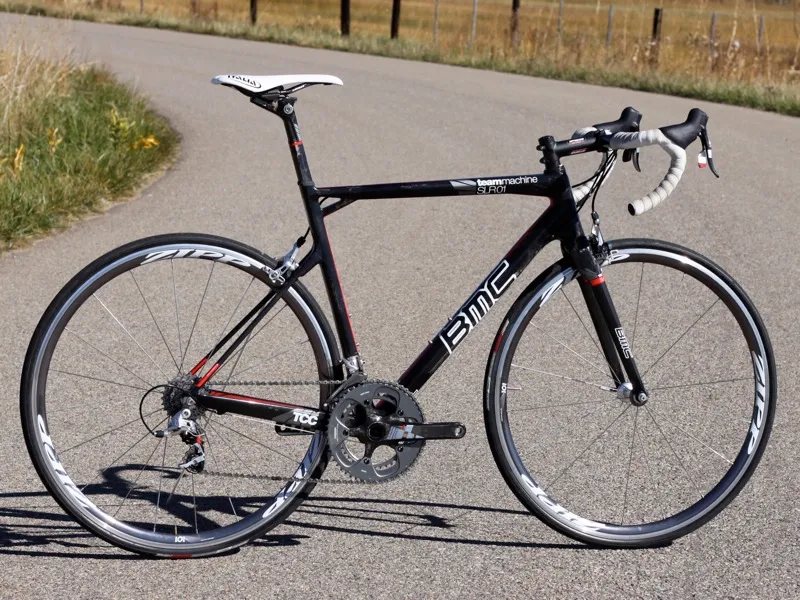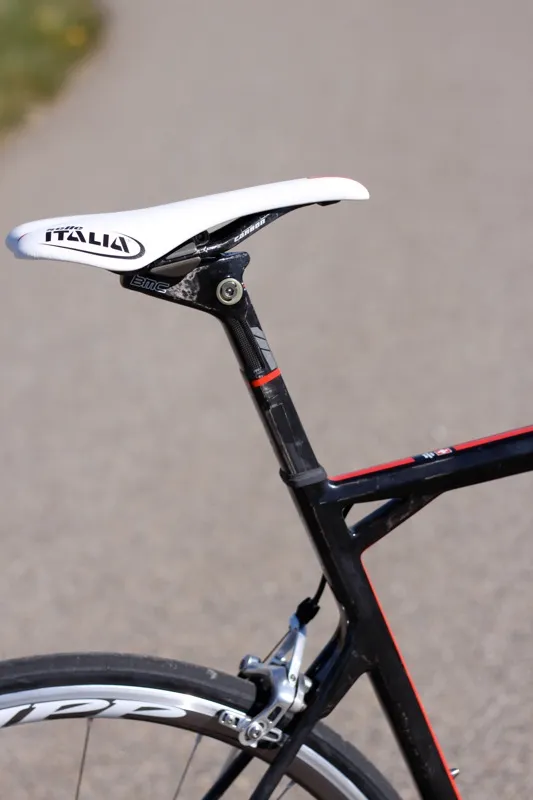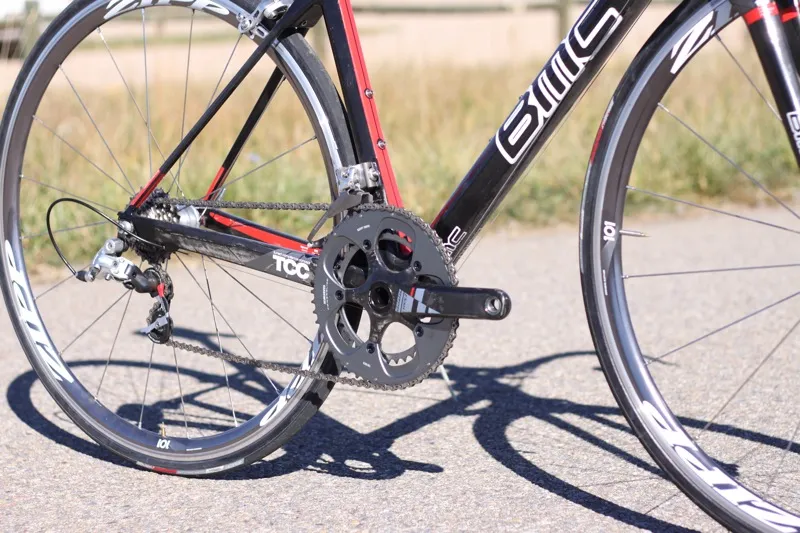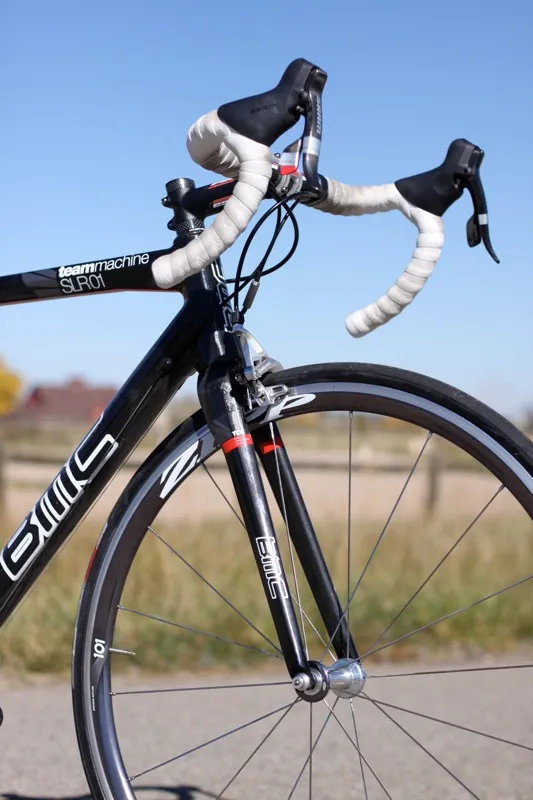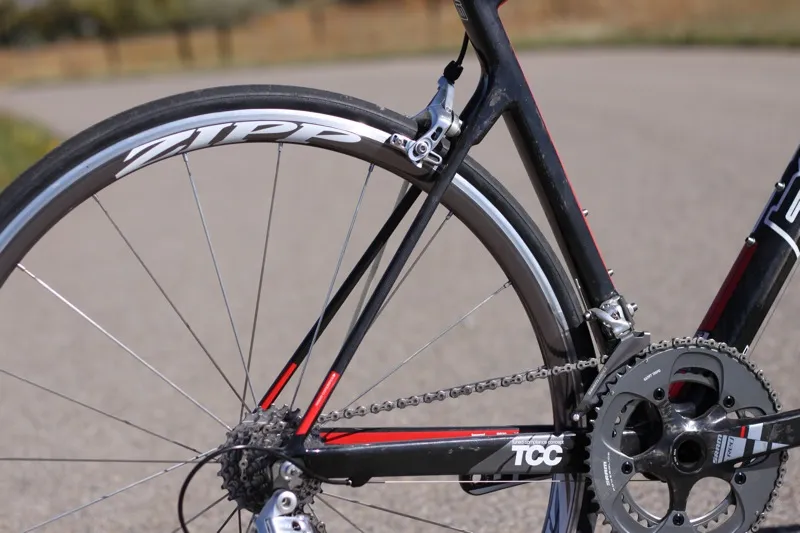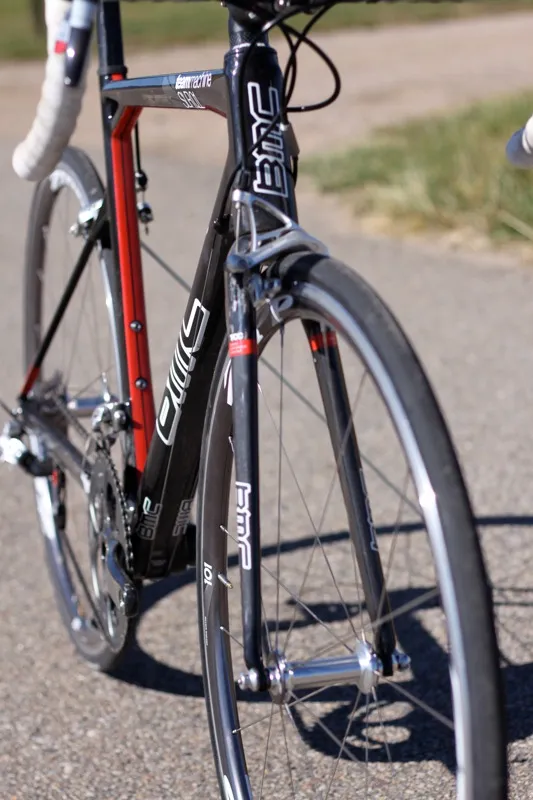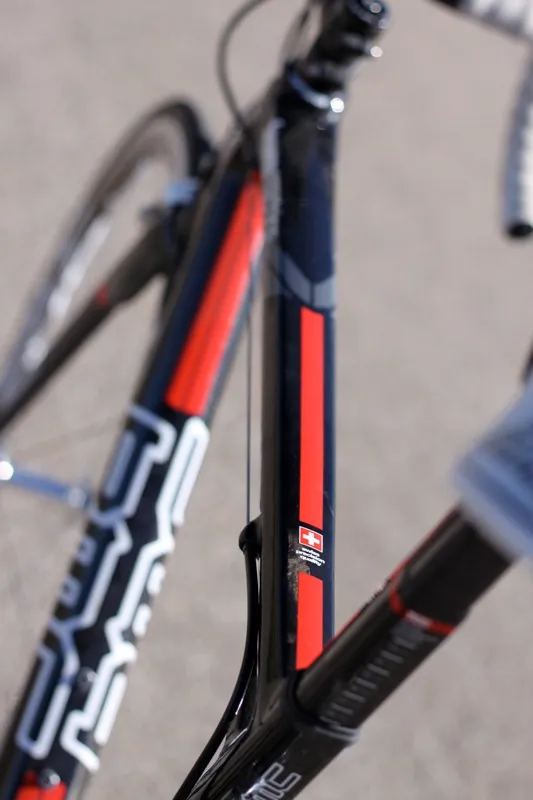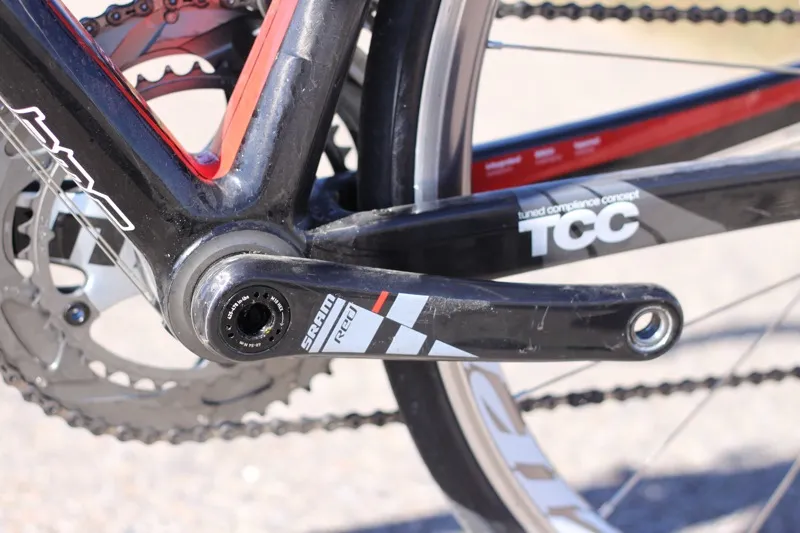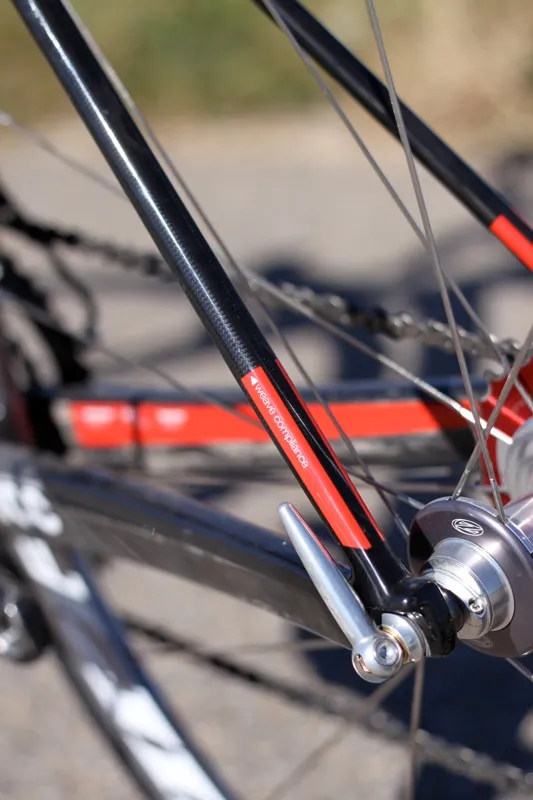BMC’s TeamMachine SLR01 is one of the best ProTour inspired bikes we’ve ever ridden. It hits the UCI weight limit of 6.8kg and is comfortable enough for any level of rider to enjoy, so long as they can handle its pro-inspired angles.
Ride & handling: A dreamy ride with a good balance of weight, pedaling efficiency and comfort
The SLR01 is far from the stiffest professional-level bike we’ve ridden, but it’s one of the best at balancing all of the coveted features of a top-level carbon fiber bike – stiffness, low weight and a degree of comfort.
In fact, it's one of the lightest bikes we’ve ridden lately – our 53cm test frame weights 905g with all of its hardware including titanium water bottle cage bolts, and the complete bike as pictured weighs just 6.812kg (15.01lb) – and it offers an incredibly forgiving ride.
It was the perfect ride for our tester, a 150lb all-rounder who enjoys climbing and descending the twisty, elevation-intensive roads around Boulder, Colorado.
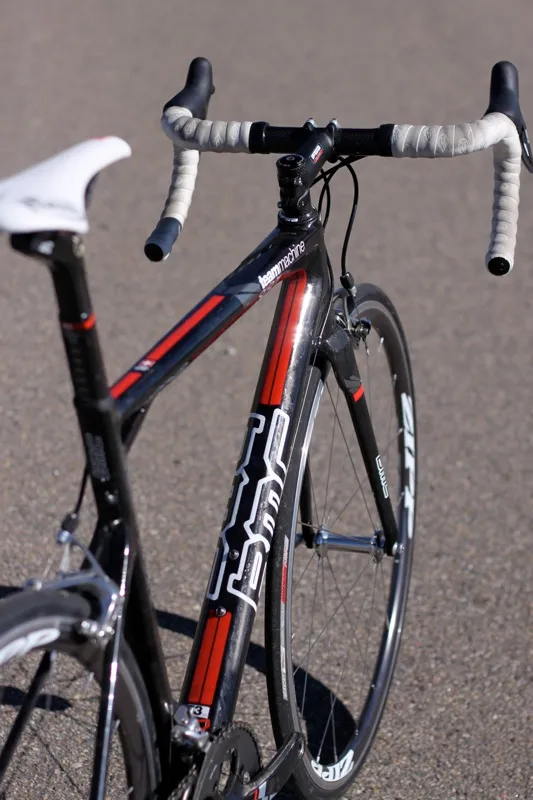
The TeamMachine's down tube undoubtedly plays a big part in providing precise steering
Despite the TeamMachine's smooth ride – which is similar to that of Specialized’s 2011 Roubaix SL3 – it offers stiff and confidence-inspiring steering precision. This is rooted in the large down tube, tapered head tube (1-1/8 to 1-1/4in) and the way the top tube gently tapers towards the seat tube. It means that subtle shifts of bodyweight aren't muted by the frame's built-in flex.
The well designed front triangle is mated to a rear end punctuated by notably svelte seatstays. Because of BMC’s focus on producing a relatively comfortable ride, the TeamMachine feels noticeably softer to pedal than other bikes in the category. Nonetheless, pedaling efficiency was adequate for our test rider, who was happy to sacrifice a little stiffness for lighter weight and improved comfort.
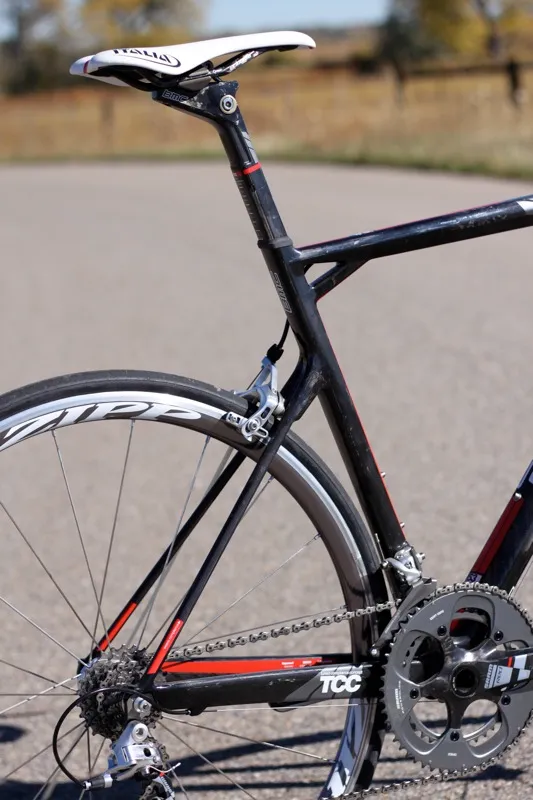
The svelte, stepped seatstays, which are fixed low on the seat tube, serve to smooth things out and save weight. They work in tandem with the TCC seatpost
The TeamMachine may not be the highest performing machine on paper or on the test bench, but it's stronger than the sum of its parts. Companies that focus too much on one attribute – such as weight or stiffness – often fail in producing a bike that rides well. That's certainly not a mistake BMC have made here.
In the past we’ve ridden bikes with ultra-rigid front-ends and super-comfy rear-ends that have a sort of disconnect between the two halves; Cannondale’s half-carbon, half-aluminum System Six bike is an infamous example of this. The TeamMachine, however, feels very much like a complete package.
Frame & equipment: Smart frame design and specification, but watch out for creaking post
BMC tout three specific features that make a difference in the TeamMachine SLR01. Firstly, they say that the use of a 1-1/8 to 1-1/4in tapered head tube rather than the more common 1-1/8 to 1-1/2in allows better control over weight and ride quality.
Secondly, comfort is increased with the use of TCC (Tuned Compliance Concept) zones – where a more elastic composite material and layup is used – in the frame, fork, seatpost and seatstays. Finally, a BB30 bottom bracket improves stiffness in this key area.
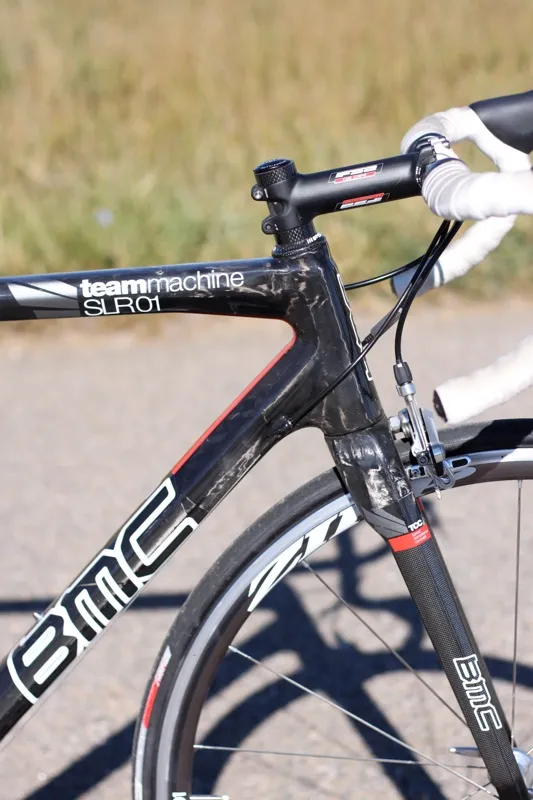
The front end with its 1-1/8 to 1-1/4in tapered head tube provides good steering stiffness
Though the TeamMachine SLR01 is only offered as a frameset in the US (a complete bike is available in the UK with SRAM Red and top-end Easton bits for £4,299), our test bike came built with SRAM’s Red group, FSA K-Force bars and F-99 alloy stem. The parts performed as expected, without flaw. The TeamMachine has traditional externally routed cables, so there were no additional issues to contend with when it came to shifting or braking performance.
Of the component features, we appreciated the low stance width of the SRAM Red BB30 crank the most. This is ultra-stiff and offers more foot and ankle clearance than any other crank out there. We feel it's the ultimate complement to a Red equipped BB30 bike.
We only had one issue with the TeamMachine: we found its TCC seatpost to creak incessantly unless a liberal amount of friction paste was used during assembly. Friction paste has a propensity to dry up and we had to apply fresh paste on two occasions during our three-month test period. Fortunately, once the friction paste was reapplied the creaking would stop.
This did make us question how much the post was moving and how it would wear, but upon inspection (both times) we weren't able to find any indication of accelerated wear to the frame or post, nor was movement noticeable when riding the bike. At no time during our test did the post migrate or slip.
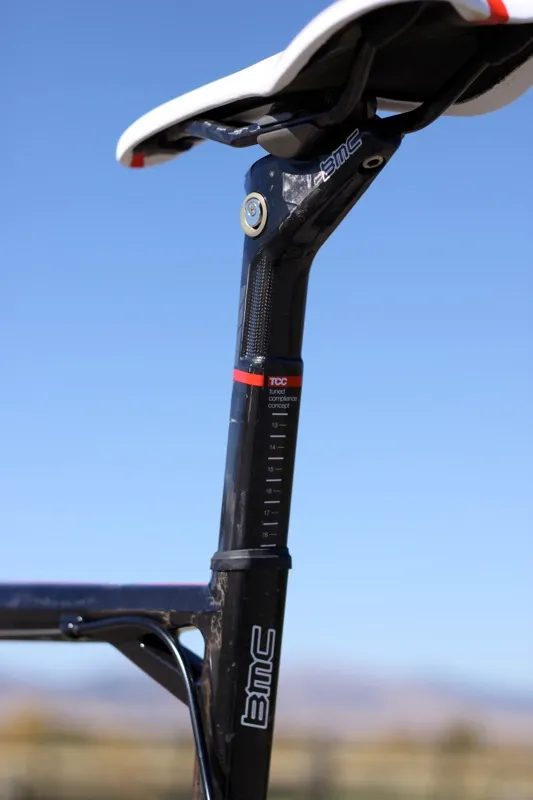
The TCC weave shows through on the seatpost
BMC still make the Pro Machine…
Heavier riders or sprinters may hold a differing opinion of how this bike performs for their intended usage. BMC also offer the RaceMachine RM01, which is built without TCC, thus stiffness likely trumps comfort or weight; then there’s also the new 2011 Impec, which we've yet to test.
BMC’s professional riders were all over the board when it came to the models they used in 2010. Cadel Evans spent the majority of his time on the TeamMachine, while former world champ Alessandro Ballan and Karsten Kroon picked the now discontinued ProMachine, and George Hincapie spent much of his time on the also discontinued RaceMaster. The riders’ choices greatly depended on the courses, too; most used the TeamMachine in the classics, for example.
